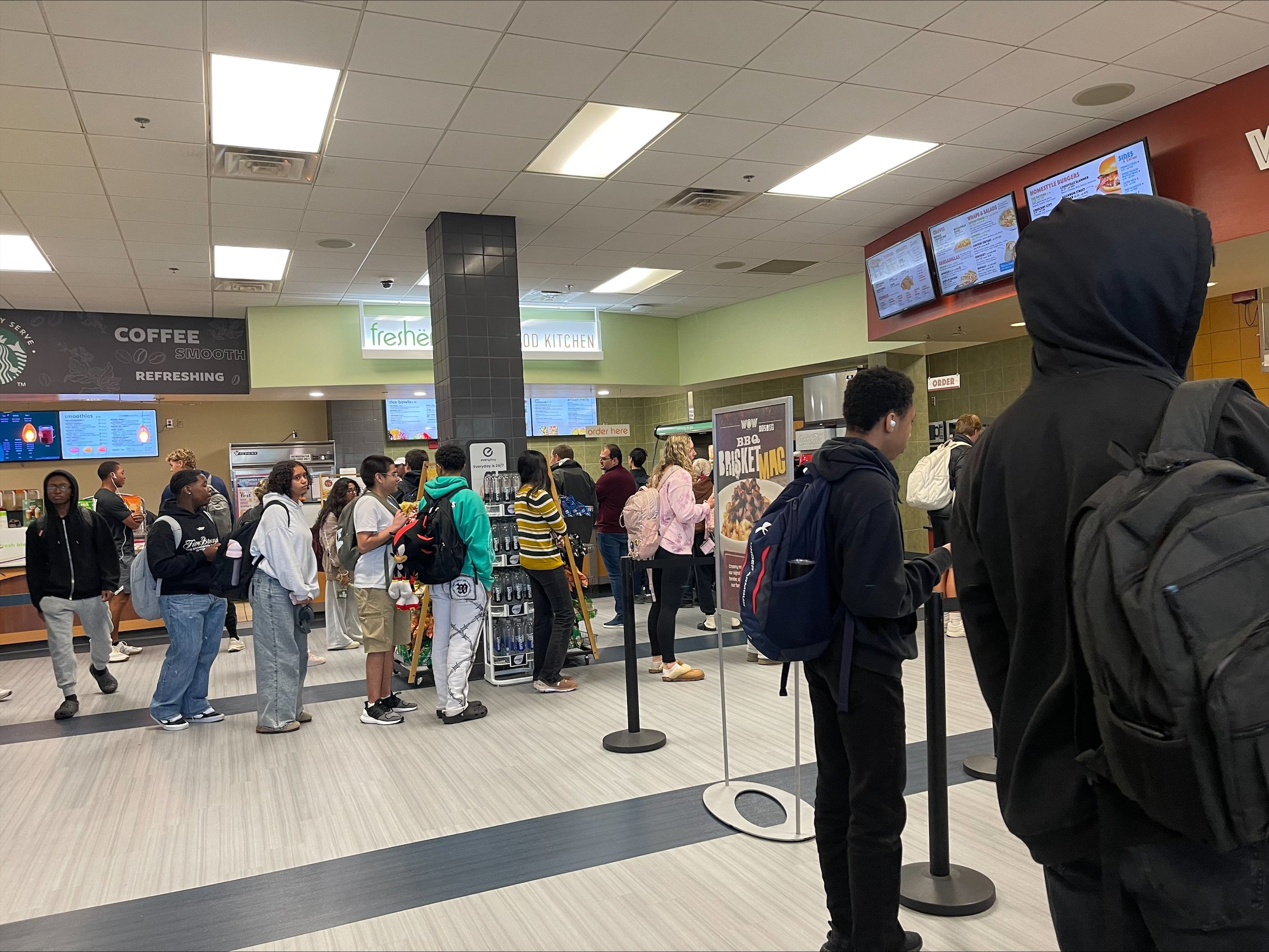Why I no longer blame the university for my lack of flex dollars
By Madi Oglesby | Opinion editor
My favorite thing to get at the JSAC food court is a Crescent City burger with just cheese and a side of fries. Sometimes, I may spice it up and grab a water or juice, but I normally keep it simple like this.
Typically, a meal like this would come up to around $10 at a restaurant. However, it seems to cost a lot more in the food court.
As the school year has progressed, I realized that my flex dollars were depleting a lot faster than I thought they would. Especially considering I only use them two or three times a week.
I first heard of flex dollars at orientation this summer. It sounded like a great idea and such a blessing– being given $150 for free, just for food. I figured it would last me at least the entire year. Sadly, I was very wrong.
I did not realize that the meal equivalency was so little in comparison to the meals that are offered at the food court.
As this year has moved along, I’ve noticed that I’m not the only one who’s dealing with the struggles of losing their flex dollars early in a semester. My roommate and I have talked about this extensively, worried about whether we will have enough to last us the year.
My roommate introduced the argument that the meal equivalency is not compatible with the rise of inflation in past years. The cost of a full meal at the food court is not covered by the meal equivalency of $9, as it normally costs much more than that.
However easy it may be to try and blame the university or its employees for this, as I did before writing this article, I actually discovered that the university does not decide on these things.
I was able to get in touch with Augusta University’s Chief Auxilaries Officer, Dale Hartenburg, and he really opened my eyes to the different moving parts that go into decisions like this. Hartenburg’s position as the chief auxiliaries officer places him as the administrator over areas such as campus stores, shuttle services and dining services.
Hartenburg pointed out that meal plan rates are approved annually by the University System of Georgia. As a result of these reviews, the flex dollar amounts can also be changed. The difference here, though, is that these changes are only implemented based on the amount that students use of their flex dollars.
“Flex dollar use has been consistent for the last few years at 80%. Meaning, students spend an average of 80% of their allotted funds,” Hartenburg said. “If the use rate moved to 90%, an increase would be requested.”
But not only that, things are looking up for the dining hall and food court next year as well. Next fall, the change will be implemented that students will be allowed to choose their amount of flex dollars, along with their meal plan. That way, the students who might be paying for a whole meal plan, but have no access to the dining hall, can make the best use out of their plan at the food court.
“The update lets students decide the flex amount necessary based on personal preference, rather than a ‘same amount for all’ approach,” Hartenburg said, echoing that the students’ voices have been heard and changes are on the way.
My favorite part about these new updates has to be the introduction of mobile ordering at the JSAC food court. No more waiting for what feels like an eternity just to grab your mac and cheese and tator tots.
Though it isn’t great that I am down to 63 flex dollars mid-semester, knowing that I will have better options next year gives me hope that maybe the same complaints won’t be made with the next class.
All of this to say, it is a lot easier to blame the university or the people in its leadership roles. Even so, they see our complaints, and they want to make changes. Good things are coming to Augusta University. Don’t lose hope yet.
Contact Madi Oglesby at auoglesby@augusta.edu.
The JSAC food court’s dining area filled with Augusta University students. Photo by Madi Oglesby.




